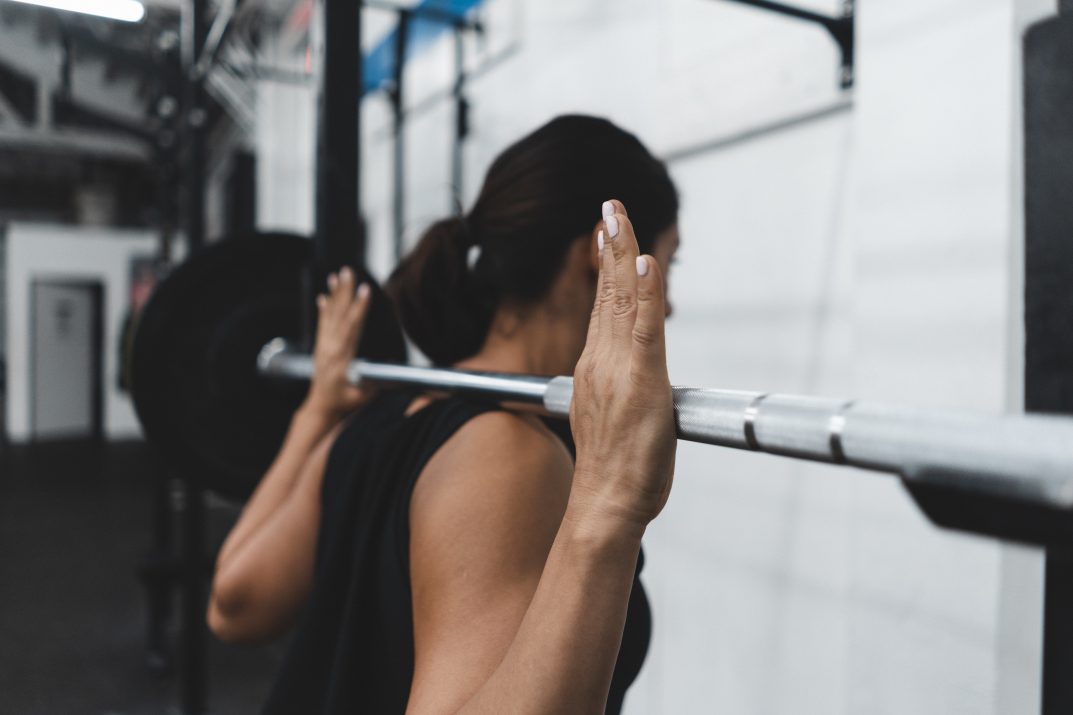Very little can go wrong when you’re strong.
Have to move your furniture around after binge-watching HGTV? That couch has nothing on you.
Need to make one trip from your car to the front door with your Costco groceries and HomeGoods *ahem* necessities? No sweat.
Physical strength prepares you for all of life’s little annoyances (i.e. running after your dog when he runs out the front door after the mailman) and dumpster fires (i.e. moving your own stuff into a U-Haul).
For a long time, women have shied away from getting strong, equating it with looking manly, having huge biceps, and generally speaking, “too masculine.”
Looking strong and actually being strong are two different things. One is subjective and the other is about capability. When you’re capable of deadlifting 2x your bodyweight, that’s hella strong.
The other nice perk of being strong?
It’s not needing to freak out about your diet all the time. When you can knock out five chin-ups or execute a flawless squat at 1x your bodyweight or more, you have wiggle room with your nutrition to enjoy your beer or cheesecake (This is also because strong people need to eat more calories anyway).
I can’t stress this enough: Strong is where it’s at. Building muscle:
- Increases your metabolic rate
- Easier to stay leaner later in life
- Increases soft tissue and joint integrity
- Helps with blood sugar regulation
This is why we don’t shy away from building muscle and getting strong inside BarbellSTRONG, a 1:1 online strength training program for women.
All this said, there are a number of factors preventing you from getting strong. I did a short IGTV about it HERE.
But without getting too deep into progressive overload (which yes, is one of the reasons), let’s get into a few more common mistakes I see ladies making with strength training.
1. Your Recovery is Trash
Recovery is boring to talk about it, but so damn important I have to discuss it first.
Muscles grow during the recovery phase after you’ve torn it to shreds on the gym floor. How you recover can catapult you to the next level of strength gains and body composition, or limit you entirely.
What is “good” recovery?
- Actual time off from training.
- Literally, rest. As in, sleep 7-9 hours consistently each night.
- Soft tissue work in the form of massages, foam rolling, theragunning your way to bliss
- High quality nutritious foods
- Adequate amount of calories and macronutrients to support muscle growth and recovery process
I’ve worked with women who are consistent and diligent with their training, but their lack of recovery (late nights, no rest days, 1200-cal crappy “diets”) prevent them from seeing changes in their strength and physique.
2. You aren’t tracking
How the frick do you expect to get strong if you’re not tracking the workouts you do and the weights you use?
In order to progressively overload week to week and continue to challenge your muscles to work harder and grow, you must write down how much weight you’re using, the sets, and reps you’re doing, and maybe even some notes about the lift itself.
Did it feel smooth? Did you have more reps in the tank during the last set? Did you fail the last lift? Were the final reps a struggle or a breeze?
You don’t have to write a novel here, just a few important notes to help you remember.
The BarbellSTRONG program stores and tracks all your workouts for you in the TrueCoach app. There you can input the weights you use, leave notes, and reference it each week so you can progress week to week with a little more weight.
3. Your nutrition is an afterthought
Baby girl, you are what you eat.
No, really. You are.
Muscles need protein, fats, and carbohydrates to grow. Your organs need those nutrients to properly function. Your strength, or lack thereof, is directly tied to your nutrition.
Unfortunately, we’ve been inundated with so much B.S. about eating “clean”, cutting carbs, and eating as little as possible that full-grown adult women are out there eating like baby birds – 1,200-1,400 calories of lettuce and the occasional side of meat.
This is not aligned with the goal of getting strong.
I get it though. Nutrition is confusing AF. The mixed messages about what to eat, how much to eat, and when is enough to make me want to dive head first into a bowl of spaghetti (Carbs = Happiness).
If you’re dialed in on your training, the next step is to dial it in with your nutrition, too, by working with a nutrition coach or service provider that can teach you about eating for your goals and lifestyle. There are also a number of amazing organizations that work with active people, and lifters specifically, on nutrition. My top three recommendations are:
The more active you are, the more nutrients your body needs, and this comes down to both quality and quantity of food.
Moreover, proper nutrition differs person to person and can change with seasons in your life. A woman training for a competitive powerlifting meet is going to need a different nutrition plan than an active woman whose goal is general health and getting strong.
Currently, I’m eating over 2,000 calories for the goal of building muscle. I lift weights 3-4x a week. I am at my happiest, both physically and mentally, when my training and nutrition are aligned and complementing each other.
4. You aren’t training hard
Training hard can be a bit subjective but when it comes to building muscle, there is a science to it. Most people confuse a tough training session with going all out, balls to the wall. This is completely unnecessary.
In order to build muscle you need 1) mechanical tension 2) Metabolic stress 3) Muscle damage.
Mechanical tension is created when you use heavy loads with exercises performed repeatedly with full range of motion.
During resistance training, metabolic stress occurs when you feel “the pump” as a result of accumulating blood, lactate and metabolities in the muscle. I think of it as a muscle building “potion” that occurs.
You might recognize muscle damage as the feeling of soreness you feel the day after a leg workout. While soreness isn’t indicative of a “good” or “bad” workout, it does signal that there was enough stimuli to damage the muscle tissue and thereby spur repair & growth.
When you’re training hard, you push yourself with each set, challenging yourself with progressive overload, adhering to your training weeks with consistency (read: not missing workouts or skipping sets), and doing all of this regularly with full range of motion.
–



